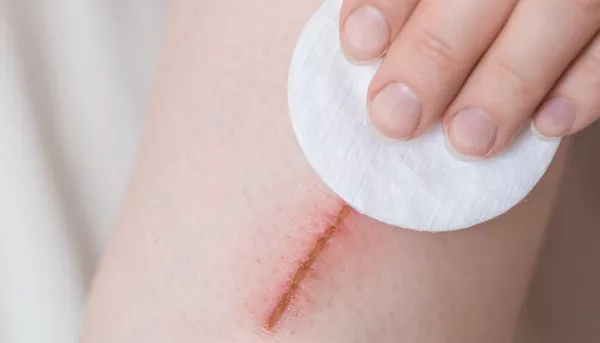Undergoing surgery is a significant milestone in one’s life, often accompanied by a mix of emotions ranging from relief to apprehension. While surgery is intended to improve health and well-being, the aftermath may include the presence of scars – visible reminders of the body’s remarkable ability to heal. In this comprehensive guide, we’ll explore the best practices for caring for new surgery scars, offering insights into promoting optimal healing and minimizing their appearance.
Understanding the Healing Process
Before delving into scar care, it’s essential to understand the natural process of wound healing. Following surgery, the body initiates a series of complex biological processes to repair the damaged tissues and restore integrity to the skin. This process typically unfolds in several stages:
Hemostasis: Immediately after surgery, blood vessels constrict to minimize bleeding, and platelets form a clot to seal the wound.
Inflammation: Inflammatory cells, such as neutrophils and macrophages, migrate to the site of injury to remove debris and combat infection.
Proliferation: Fibroblasts produce collagen, the primary structural protein in the skin, to rebuild the damaged tissue. New blood vessels also form to nourish the healing wound.
Remodeling: Over time, the scar undergoes remodeling as collagen fibers realign and mature, gradually strengthening and stabilizing the scar tissue.
While the body’s innate healing mechanisms are remarkable, the appearance of scars can vary depending on factors such as genetics, wound size, location, and surgical technique. However, proper scar care can play a crucial role in optimizing the healing process and minimizing the visibility of scars over time.
Best Practices for Scar Care
Caring for new surgery scars involves a combination of gentle skincare, protection from environmental factors, and patience as the healing process unfolds. Here are some best practices to promote optimal scar healing:
1. Keep the Wound Clean and Moisturized:
Gently cleanse the surgical site with mild soap and water to remove debris and bacteria.
Apply a thin layer of moisturizing ointment or silicone gel to keep the wound hydrated and promote healing.
2. Protect the Scar from Sun Exposure:
Shield the scar from direct sunlight by covering it with clothing or using sunscreen with SPF 30 or higher.
UV radiation can cause scars to darken and become more prominent, so sun protection is essential for minimizing discoloration.
3. Massage the Scar Tissue:
Begin gentle scar massage once the wound has fully closed and stitches have been removed.
Use circular motions to massage the scar for several minutes each day, helping to break down scar tissue and improve circulation.
4. Apply Silicone Sheets or Gel:
Silicone sheets or gel are clinically proven to soften and flatten scars, making them less noticeable over time.
Apply silicone products to clean, dry skin and wear them consistently for several hours each day for optimal results.
5. Consider Scar-Reducing Treatments:
In some cases, dermatological treatments such as laser therapy, microneedling, or corticosteroid injections may be recommended to improve the appearance of scars.
Consult with a dermatologist or plastic surgeon to explore potential treatment options based on your specific scar characteristics and goals.
6. Be Patient and Consistent:
Scar healing is a gradual process that may take several months to years to reach its final appearance.
Be patient and consistent with scar care practices, as diligent maintenance can yield significant improvements over time.
7. Seek Professional Guidance:
If you have concerns about your scar’s appearance or healing progress, don’t hesitate to consult with a healthcare professional.
A dermatologist or plastic surgeon can provide personalized recommendations and interventions tailored to your unique needs.
Choosing the Right Scar Care Products
When selecting scar care products, it’s essential to choose those specifically formulated to support the healing process and minimize scar formation. Look for products that are:
Gentle: Choose products that are free of harsh chemicals, fragrances, and irritants to minimize the risk of skin irritation or allergic reactions.
Hydrating: Opt for moisturizing ointments or gels that keep the scar tissue hydrated and supple, promoting optimal healing.
Clinically Proven: Select products that have been clinically tested and shown to be effective in reducing scar appearance and improving skin texture.
Conclusion
Caring for new surgery scars requires patience, diligence, and a proactive approach to promote optimal healing and minimize their appearance. By following best practices such as keeping the wound clean and moisturized, protecting the scar from sun exposure, and incorporating scar-reducing treatments as needed, individuals can support the body’s natural healing process and achieve smoother, less noticeable scars over time. Remember, each scar tells a unique story of resilience and healing, serving as a reminder of the body’s remarkable capacity to overcome adversity and thrive.
[inline_related_posts title=”You Might Be Interested In” title_align=”left” style=”list” number=”6″ align=”none” ids=”7013,6946,6943″ by=”categories” orderby=”rand” order=”DESC” hide_thumb=”no” thumb_right=”no” views=”no” date=”yes” grid_columns=”2″ post_type=”” tax=””]

































